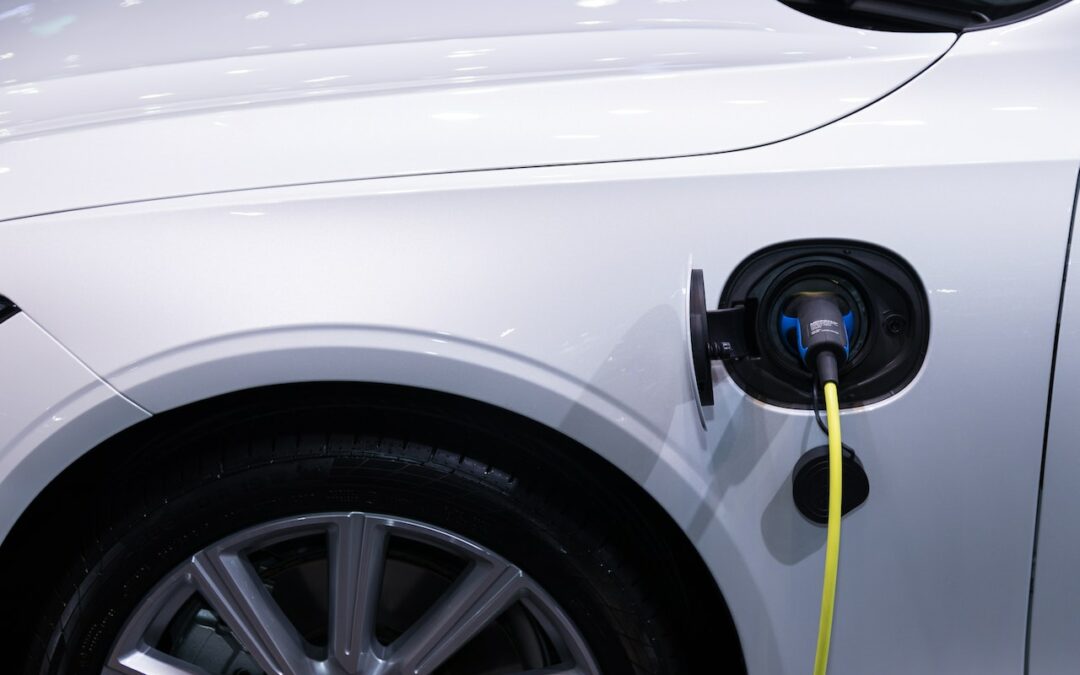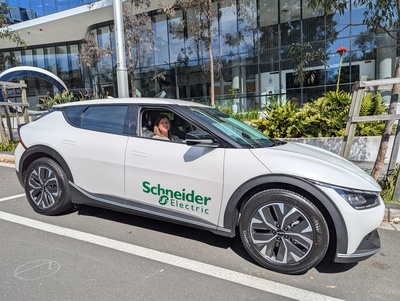
The electric car charging network continues to discriminate against disabled people
Consumer editor Chris Rosamond thinks the UK’s charging network is still failing to provide for those who struggle to use it

Driving change: how electric vehicles are fuelling Australia's sustainable businesses
The climate crisis has been driving a steady energy transition towards renewables with companies increasingly focused on reducing emissions, more so now with the introduction of mandatory climate related financial disclosures. The requirements for our biggest companies will come into force in January 2025 and will progressively roll out to smaller organisations.
As businesses increasingly face pressure to demonstrate environmental responsibility, they are discovering the impact of fleet electrification in helping them meet emissions reduction targets.
This is an effective sustainability initiative, for large companies and our nation, with transport responsible for approximately 20% of all carbon dioxide emissions. Transition to electric vehicle (EV) fleets is essential for reducing Scope 2 emissions and achieving net zero greenhouse gas emissions targets.
The findings of Schneider Electric’s Sustainability Index, 2024, which surveyed over 500 key decision-makers across corporate Australia, found that 27% of respondents are investing more in EV fleets compared to three years ago.
Global EV sales continue to break records with strong consumer demand across all industries, including those with both light and heavy fleet vehicles. Vehicle emissions are one of the simplest ways to demonstrate progress on emissions reductions. Schneider Electric has joined a global initiative, EV100, and is committed to accelerating the transition to electric fleets.
Globally, Schneider Electric will transition its fleet of approximately 14,000 vehicles to EVs, with charging stations installed at offices and factories, by 2030. In Australia in 2025, Schneider Electric will have already transitioned over 100 vehicles to EVs, significantly lowering its Scope 2 emissions, and aims to beat the 2030 goal.
The transition to EVs in corporate fleets is a major step towards a sustainable future and is increasingly seen as a business opportunity. The global carbon footprint of transportation is significant, but fleet vehicles can lead the way to a healthier planet. The reduction in greenhouse gas emissions per vehicle is significant over an asset’s life and when multiplied across an entire fleet, one company making the switch to greener vehicles contributes to a meaningful cumulative impact.
With growing awareness of the benefit of EVs in reducing Scope 2 emissions, there is also a strong argument for a transition to an electric vehicle fleet from a financial perspective. The cost savings over the lifetime of an electric vehicle compared to a regular vehicle are significant. And government incentives and rebates can substantially reduce the upfront cost of purchasing electric fleet vehicles, making them more financially feasible — for businesses of all sizes.
In pursuing a fleet electrification strategy, a key challenge is concern around vehicle range performance and charging options. Addressing this is an important part of the transition plan. This demands a holistic approach: integrating technological advancements, financial incentives, infrastructure development, and educational initiatives is important for a successful outcome, including enthusiastic EV drivers.
With any change there is a natural and varied human response. Supporting employees to understand and appreciate the benefits of an EV fleet while helping them manage practical aspects, such as a new approach to charging, will help to smooth the transition.
Of help is also the market and government response to the increasing number of EVs on the road, with growing charging networks across workplaces and public commercial buildings, such as shopping centres, as well as kerb-side parking. Furthermore, advancements in fast-charging technology are reducing charging times and continuous improvement in battery technology is extending driving ranges, which is helping to make the corporate and public transition to EVs increasingly easier.
Commitment to sustainability is not limited to reporting requirements and driving an EV. In fact, 70% of the Sustainability Index survey respondents agree that sustainable transformation gives them a competitive edge.
Schneider Electric’s own ambitious goals to reduce emissions across its operations and assist its customers in doing the same saw it named by Time magazine and Statista as the world’s most sustainable company for 2024. This recognition highlights Schneider Electric’s dedication to leading by example and supporting others in their sustainability journeys.

Meet the 2024 Climatelinks Photo Contest Winners
Meet the 2024 Climatelinks Photo Contest Winners
jschoshinski
Tue, 10/29/2024 – 15:57
The 2024 Climatelinks Photo Contest captured how communities across the globe are confronting climate change. We received over 300 submissions from the Climatelinks community, representing more than 45 countries. Thank you to everyone who participated in the contest and congratulations to the winners!
All submissions to the photo contest will be published on Climatelinks in the coming weeks. To view this year’s submissions as well as photos from our blogs and past contests, visit the Climatelinks photo gallery. Visitors may also submit their own photos to the gallery year-round.
Introducing the winners:
Solar-Powered Irrigation Transforming Agriculture for Smallholder Farmers
Image
USAID helps farmers like these in Villa de San Francisco, Francisco Morazán, Honduras adopt climate-smart technologies to boost their productivity and adopt sustainable agricultural practices.
Photo Credit: Andre Ancheta for USAID
Farmers operate a solar-powered irrigation system in Villa de San Francisco, Francisco Morazán, Honduras, giving them a reliable supply of water to grow their previously rain-fed crops even during droughts. USAID’s Transforming Market Systems Activity helps farmers adopt this and other climate-smart technologies to boost their productivity and adopt sustainable agricultural practices that build their resilience to water scarcity and other impacts of droughts.
Ama’t Anak”(Father and Son) Travel Through Protected Mangroves
Image

